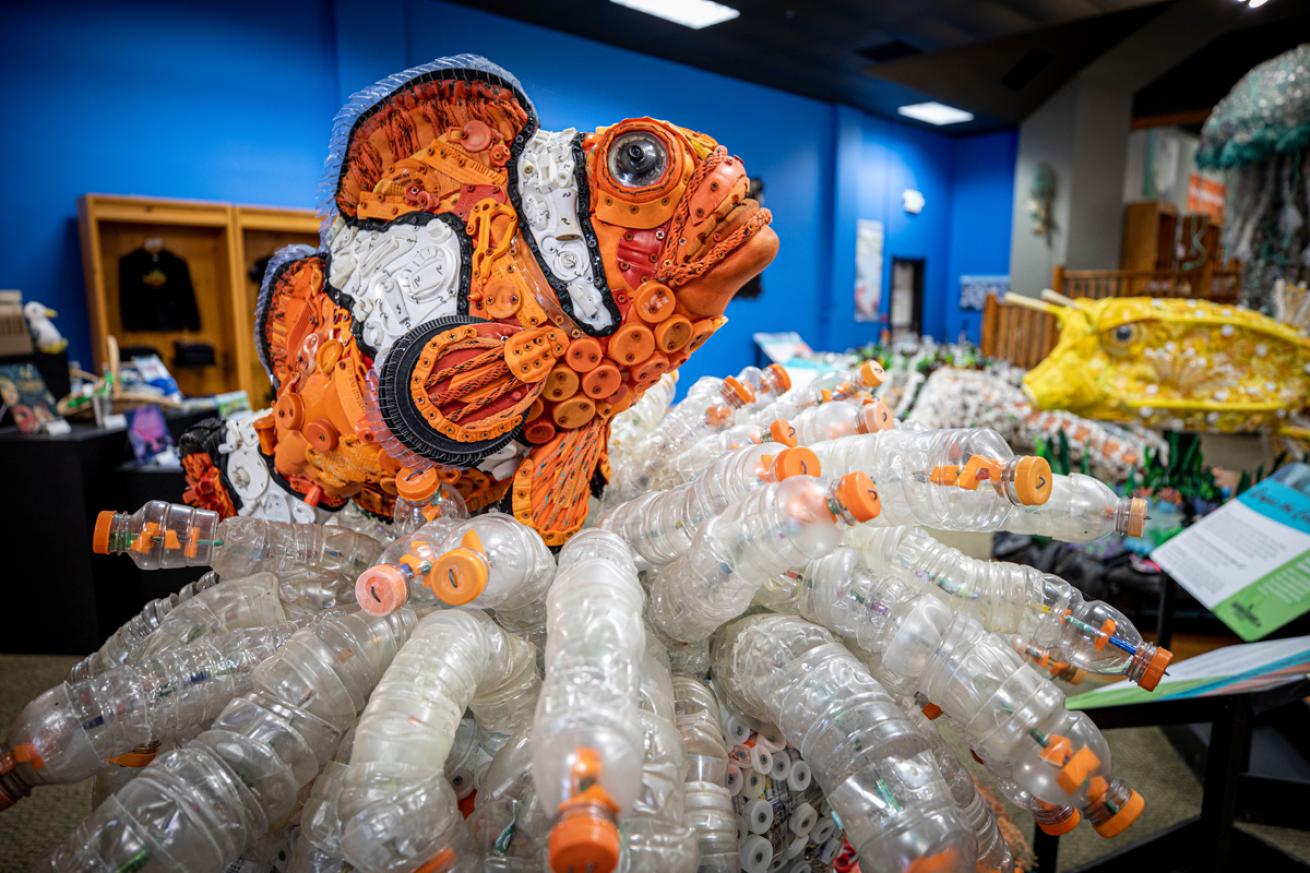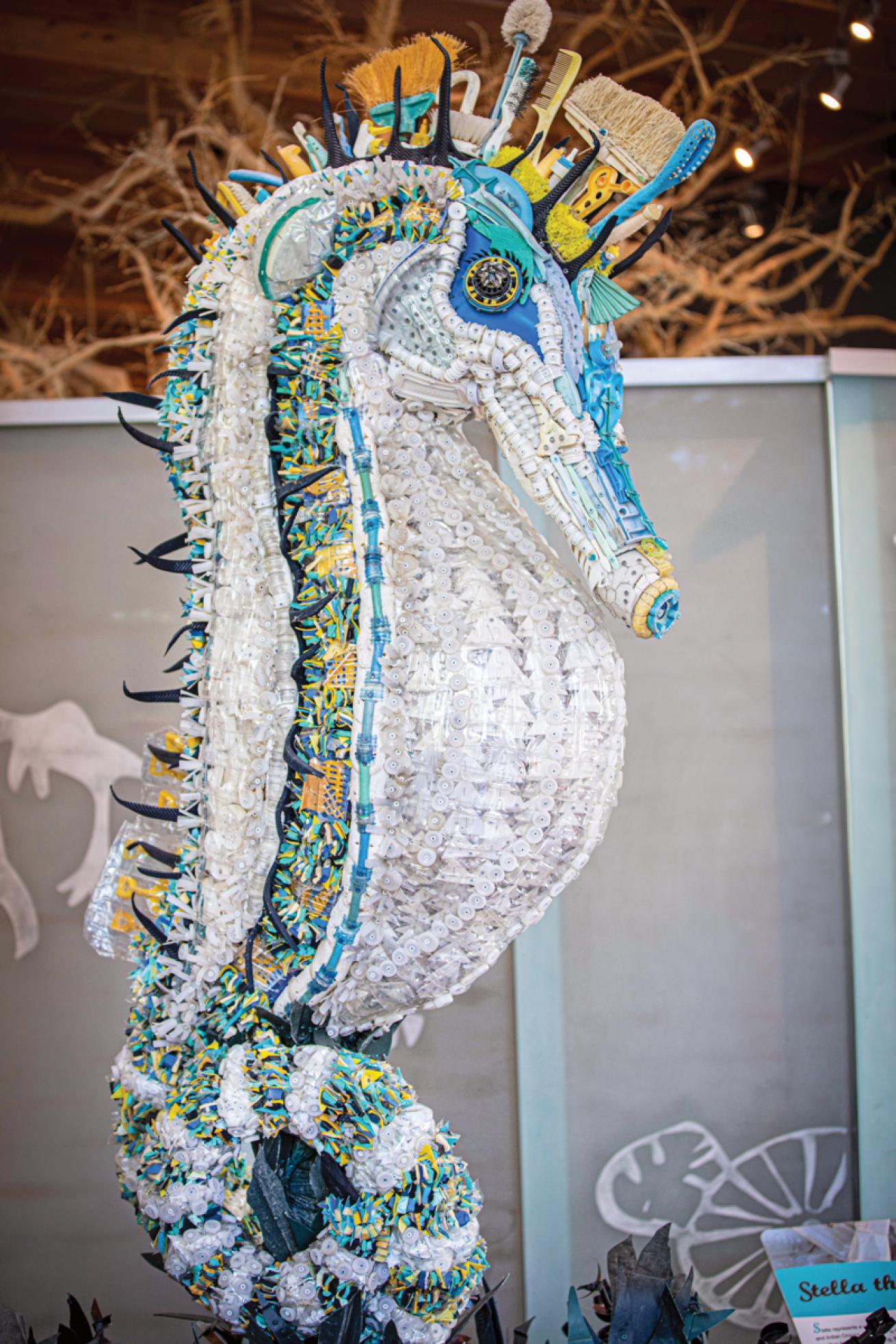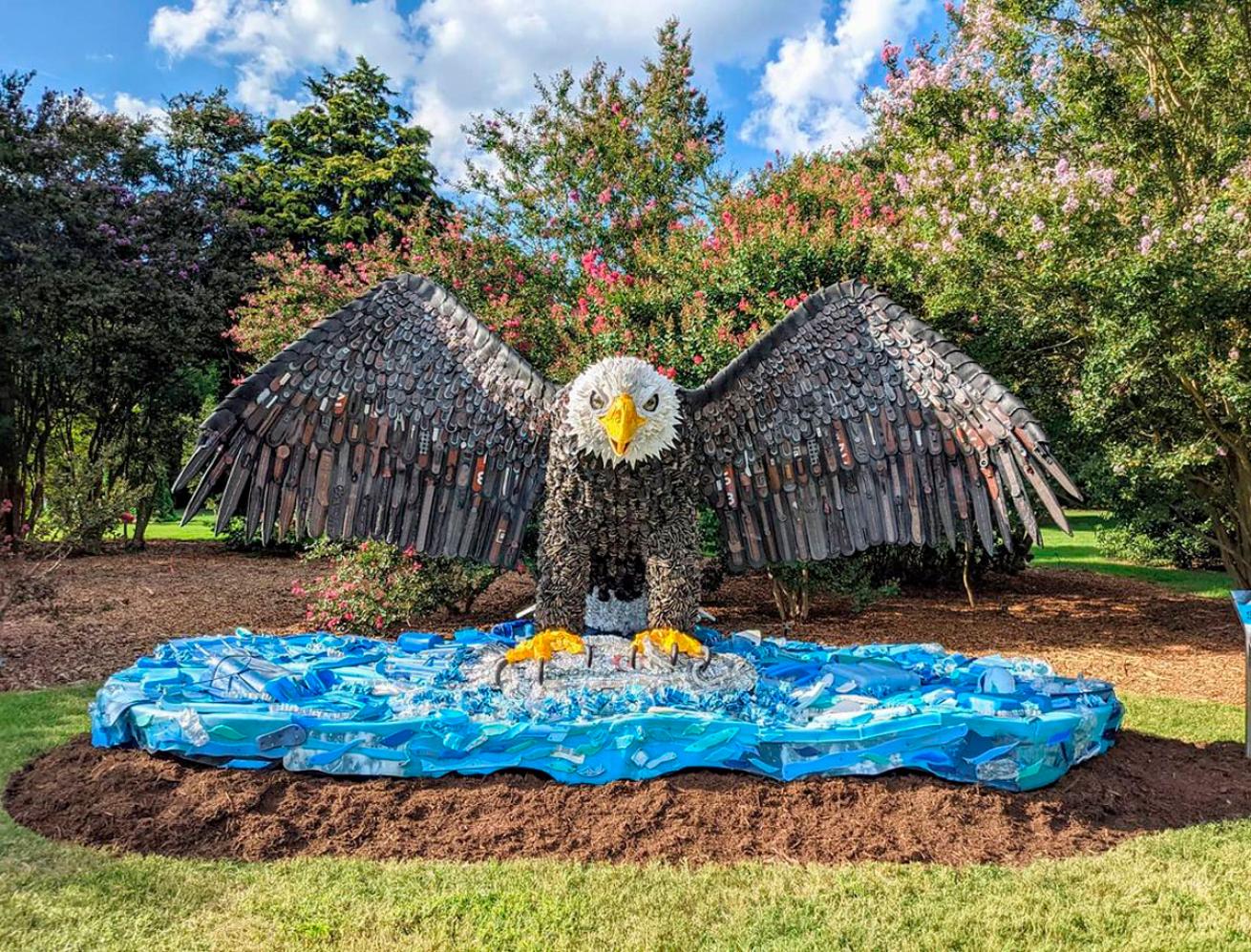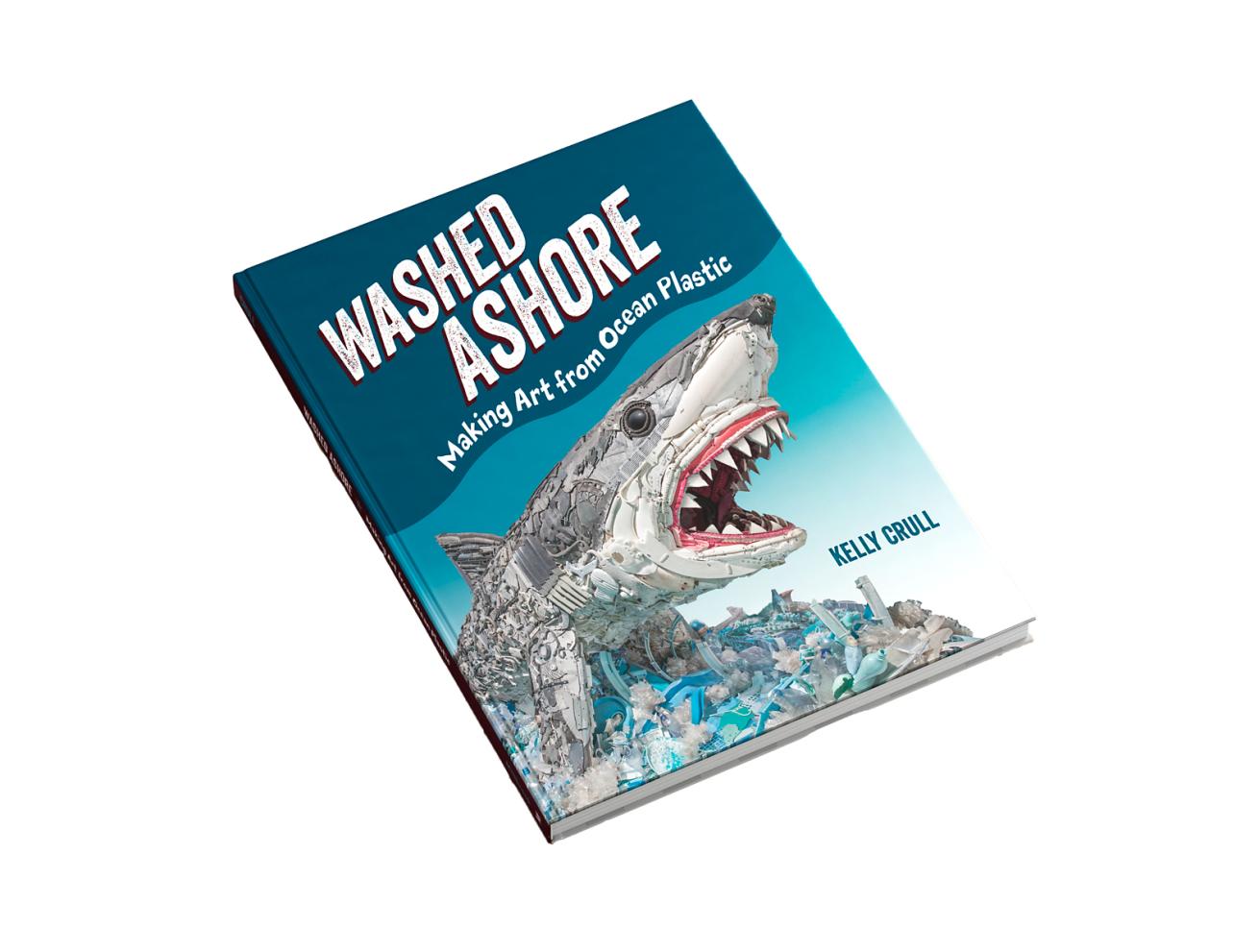Meet the Organization Turning Marine Debris Into Incredible Art

Courtesy Washed Ashore ProjectCleo the clownfish: Made entirely of marine debris.
Just as the Coquille River bends like a periscope and spills into the Pacific Ocean, the town of Bandon slips into view. The small Oregon town is best known for its thriving cranberry industry, world-class golf resort and access to a variety of outdoor activities, but it may surprise visitors to learn it is also a hotspot for artists looking to make a difference.
The Washed Ashore Project came to life as a nonprofit in 2010, with support from the Artula Institute for Arts and Environmental Education. Founder Angela Haseltine Pozzi, a Bandon artist and resident, started the project with a mission to create “art to save the sea.”
Unlike framed paintings that hang in an art gallery, Washed Ashore art is crafted out of plastic debris collected from beaches by volunteers of all ages.
Picture a weedy sea dragon taller than a basketball player, and made of soda bottles and plastic scraps. Or a bald eagle sculpture—affectionately named Rosa—with a 15-foot wingspan, weighing in at about 2,000 pounds and made from flip-flops, water bottles and beach toys.

Courtesy Washed Ashore ProjectStella the seahorse: A Sculpture made of marine debris.
Although Washed Ashore has 87 sculptures to its name, executive director Katie Dougherty says it has evolved into a nonprofit with a mission to educate a global audience about plastic pollution in both our waterways and the ocean, and spark positive change in consumer habits.
According to the International Union for Conservation of Nature, each year 14 million tons of plastic enters the ocean. This plastic entangles, injures and kills marine life. It also threatens food safety and quality, human health, and coastal tourism.
Where adults may sink into hopelessness about the state of the ocean, children still have the capacity to become excited by the prospect of solving problems. Thus, a key part of the program is connecting with younger generations who will face the issue of marine debris in their lifetime.
“When we’re talking to kids about single-use plastic and trash blowing into the ocean, they just get it. Us older folks feel, well, we got them into this, now we have to get them out.” Dougherty jokes that Washed Ashore would love to run out of art supplies because that would mean the threat to marine life and the ocean is coming to an end.

Courtesy Washed Ashore ProjectRosa the bald eagle: A statue made of marine debris.
A scuba diver herself, she recalls a recent dive in Panama: “I saw a floating plastic bag and I thought, Oh my gosh, if I was a turtle this would look just like a jellyfish. This is also the story we most often tell at Washed Ashore, but when I saw that for myself, it really hit me.”
With the myriad sculptures Washed Ashore is able to create using discarded plastic, pessimist or optimist, you can’t help but wonder, “What can I do?”
Buy The Book

Courtesy Washed Ashore ProjectWashed Ashore: Making Art from Ocean Plastic, by Kelly Crull
Published March 1, 2022, Washed Ashore: Making Art from Ocean Plastic, by Kelly Crull, takes some of the most beloved sculptures and shrinks them down into a beautiful picture book, including information about each animal as well as tips on how to reduce your reliance on plastic, make your own plastic art, and organize a beach cleanup. A portion of proceeds from this book will be donated to Washed Ashore so volunteers can continue making art to save the sea.










